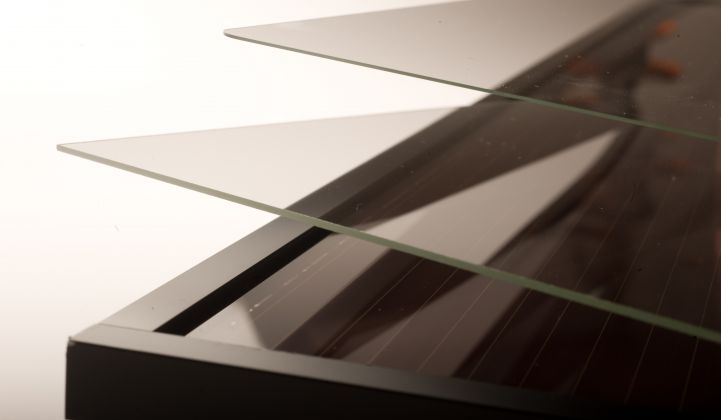The phenomenal growth rate and sheer potential size of the solar industry has begun to attract industry behemoths such as Samsung, Siemens, Toshiba, Mitsubishi, LG, Honeywell, Hyundai, Honeywell, and GE.
Add Corning to that list.
It's a sign of a maturing industry, as well as a recognition that there's money to be made in the solar sector, that these global players are maneuvering for position.
Corning (NYSE:GLW), the New York-based glass giant, has been in business for 160 years and has built its share of blockbuster inventions, including the machine to make the Edison light bulb and the machine that made the television picture tube.
Now Corning is bringing its expertise in glass and manufacturing scale to to enhance solar modules. The firm helped enable the scale-up of liquid crystal displays according to Dr. Gary Calabrese, Vice President and Director of Corning's Photovoltaics Group, adding, "We are trying to do the same thing for PV."
Calabrese claims that Corning's glass can provide up to two percentage points of efficiency improvement.
In many cases the glass used in typical solar modules uses standard window glass. Corning "does not and will never make window glass" according to Calabrese. Corning does, however, make higher-end specialty glasses using their fusion draw process. Unlike "float-glass," which fabricates glass formed on a molten bed of tin, the fusion-draw process creates glass drawn down off of a "double waterfall" of molten glass, and fuses together the two flows. The outer confines of the glass does not touch any surface -- just air.
Usage of the Corning glass has allowed Oerlikon, the amorphous silicon (a-Si) equipment vendor to make a bit of progress in that beleaguered technology, unlike their former competitor in a-Si, Applied Materials. The two firms recently trumpeted an 11.9 percent tandem junction efficiency for a-Si -- post "light soaking" and without an anti-reflective (AR) coating. The efficiency gains in a-Si are because of improved "light-trapping," according to Calabrese -- light stays in the absorber films longer. Note that these figures are from hero experiments, not production products.
Corning is also working in the other thin film technologies -- cadmium telluride and CIGS -- although the efficiency gains are from another mechanism.
Calabrese would not reveal the cadmium telluride (CdTe) solar vendors that Corning is working with, but the list of credible CdTe players is small: First Solar, Abound Solar and Primestar/GE. He said, "We are working with a number of CdTe suppliers."
Corning's glass innovations allow the glass to be treated at a higher temperature, and higher temperatures can improve deposition rates, throughput and quality of the film. Corning's glass is also thinner and lighter, a factor which can reduce installation time and shipping cost, as well as the embedded energy and energy costs involved in module processing.
The participation of firms like Corning signals solar's entry into the big leagues. These types of global firms can provide the scale and cost and performance improvements to help get solar to grid parity.



